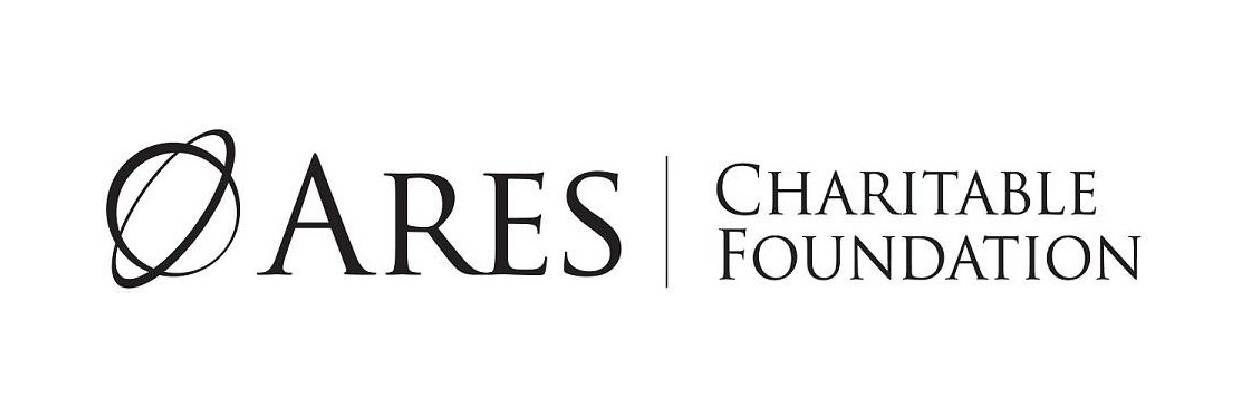JFFLABS
Proactive Talent Strategies for a Green Workforce: A Guide for Small and Medium-Sized Businesses
By investing early and often in attracting and retaining top talent, small and medium-sized businesses can lead the way toward creating a sustainable and inclusive economy.
New federal investments in green technologies are expected to create nearly 3 million jobs annually over the next 5 to 10 years.1 As leaders of the small and medium-sized businesses driving economic growth and advancing these industries, you’ll be pivotal in creating these jobs and developing the talent to do this crucial work.2
Jobs for the Future conducted interviews and researched the practices of 150 small- to medium-sized businesses in the emerging green economy to identify strategies they are using to meet the ever-shifting demand for green skills while positioning themselves for future success.3 Here’s what we learned:
- Green business leaders can take proactive take steps to broaden their talent pools and implement workforce strategies that help their companies grow and thrive.4
- Good pay, strong benefits, employer-sponsored training, and a supportive company culture are essential for an inclusive and skilled workforce, lasting retention, and a competitive business.5
The National Federation of Independent Businesses (NFIB) found that “locating qualified employees” was the second biggest concern for U.S. small businesses, followed by “finding and keeping skilled employees” at number five.6 Faced with numerous simultaneous pressing issues, smaller businesses tend to hire from within their existing networks, but attracting and retaining a diverse workforce—by race, ethnicity, gender, sexual orientation, and ability—is key to meeting their talent needs.7 By thoughtfully creating a talent strategy even in the early stages of operations, small and medium-sized businesses are primed to design jobs that benefit their company, their communities, and the planet.

Evette Ellis,
ChargerHelp!
Increasing the uptime of electric vehicle charging stations to promote mass EV adoption.
“When you're building those building blocks of the unknown it can be a bit difficult, but we haven't backed down from that challenge, and we haven't decided to leave it as the status quo. We have decided to invest in people's training."

Tina Pinia,
Re-Nuble
Developing technologies to mitigate the impacts of climate change by supporting a sustainable and productive food supply.
“Talent recruitment is a challenge. We’re doing a lot of retraining… we may use off the shelf equipment but not how it was used traditionally or historically. We're using these tools for a new market.”

Su Sanni,
Dollaride
Scaling affordable, efficient, and clean transportation.
“We do a lot of community engagement in order to understand what things are blocking a community from really participating in a clean energy movement like this. And if we identify something that we think we can help with, then we try to take that on.”
Compensation
Benefits are a proven tool for appealing to a diverse group of talented team members.8 To attract and retain the best workers in today’s competitive job market, your total compensation package must offer more than just a competitive salary reflecting experience, skills, and performance. A well-crafted compensation package includes benefits that meet the needs and preferences of both current and prospective employees.
We looked across the companies in our sample to see what benefits they provide to employees, and examined how those benefits signal a welcoming environment to a diverse range of prospective talent.
-
Benefits Trends
An analysis of 150 green companies revealed key trends in the types of benefits these companies offer their employees.
- Health care - 66%
- Paid time off - 55%
- Retirement accounts - 42% (of which 60% included a company match)
- Company equity - 24%
- Training - 21%
- Parental leave - 21%
- Social perks - 17% (e.g., charity donations, paid volunteer hours, office snacks, staff outings)
- Flexible schedules - 13%
- Daily expense benefits - 12% (e.g., transportation, phone, internet)
- Most companies offered health insurance coverage (66%) and paid time off (55%). The next most common benefit was retirement accounts (42%, of which 60% offered an employer match).
- Less common were benefits investing in employee stability outside the workplace such as parental leave (21%), flexible schedules (13%), mental health supports (10%), or transportation benefits (9%, including commuter benefits, mileage reimbursement, gas cards, paid parking).
Fewer companies offered incentives such as education loan assistance (2 companies), fertility coverage and reimbursement for out-of-state reproductive care (2 companies) or extending benefits to employee partners in civil unions and domestic partnerships (1 company).
While not mentioned explicitly by the companies we reviewed, businesses can also invest in newer financial wellness tools in the market such as Emergency Savings Accounts (ESA) that support employees’ maintaining a positive cash flow, higher liquidity, better credit, and low debt-to-income ratios—factors that support their mental and physical well-being.9
Training
As a business owner, you are often refining your talent needs in real time, making tough choices about what skills to contract out and what to bring in-house. When most workers change roles, the skills required in the old job and the new one overlap by about 50%, but that figure drops to 16% for workers pivoting into green jobs.10 Both recent graduates and experienced workers need clarity on the green skills their roles require and training opportunities so that they can deliver.
-
Supporting Continuous Learning
- To keep pace, you will need a training strategy. Most company leaders we interviewed are working with training organizations as referral partners, but you broaden your pool of eligible applicants if you also offer continuous skill-building opportunities post-hire. Your training investments can be one of your best demonstrations of commitment to your employees’ growth and longevity.11
- Education benefits encourage employee loyalty and retention, showing you value the development of every team member.12 Even though it can be an expensive proposition when funds are limited, in 2022-2023, small and midsize companies spent more per learner ($1,420 and $751, respectively) than larger corporations ($481).13 Yet across the companies we reviewed, only 21% of business leaders mentioned training as a part of their benefits package. Most referred to generalized support like education assistance programs or learning stipends. On-the-job training or apprenticeships, even though research shows that, compared to additional academic qualifications, those strategies can be particularly effective—and necessary—for employees in green jobs.14
Let prospective employees know they can grow with you.
Only one company in our review explicitly welcomed uncertain applicants in job postings:
“Hesitant to apply? Even if you do not believe that you meet 100% of the listed skills or experiences but feel that this is a great role for you, we would still like to hear from you!”
Culture
The sustained success of any workplace hinges greatly on its culture. While decisions about compensation and training play a significant role in shaping this culture, business leaders can take additional steps to build cultures that make employees feel heard, respected, and valued.15 These measures include:
“We trust our techs to make good decisions with purchases. They don’t have to feel they have to cry to their management [about their needs]. There’s no fear-mongering or taking advantage of the system… Trust is a piece of the conversation that many people don't even acknowledge.”
Evette Ellis, ChargerHelp!
-
Cultivating Trust
Power dynamics and hierarchies inherent in company structures affect how employees relate to their executive teams, their managers, their peers, and their work. You may have a mix of salaried and hourly employees, people who work in the field, and people who work remotely. For instance, ChargerHelp! provides company expense cards for their technicians to make simple purchases for worksite needs, such as personal protective equipment, without requiring them to go through a lengthy management approval process—not a standard industry practice. Trusting cultures where employees know they are valued can help level the playing field and reduce related tensions, especially when working in dynamic and fast-changing environments.16
-
Leading With Transparency
Pay transparency laws have been enacted in at least eight states as of 2023, but 56% of the companies we reviewed did not include wages or salary ranges in their job postings.17 Sharing compensation ranges internally, as well as in job postings, helps build trust by taking the onus off workers to negotiate.18 Especially if the pay ranges for a role are reasonably narrow, employees have fewer questions about how their work may be valued compared to their peers, and how factors like productivity or tenure play a role in determining compensation. In general, research shows transparent and fair pay structures across roles are linked to increased employee productivity.19
-
Open Communication and Collaboration
Our recent research on green jobs showed that nearly half required time working outdoors. As of early 2024, only five states have passed laws protecting people working in conditions such as extreme heat.21 You can be the company that helps set positive standards for employees to communicate with their managers and jointly navigate productivity and safety to ensure employee concerns are heard and addressed.
“We ask people individually, what else could move the needle in terms of benefits at this time? So just having one-on-one conversations, including them in feedback, has helped.”
Tinia Pina, Re-Nuble
-
Support
Providing support and resources for professional growth and well-being shows a commitment to employee success. When employees feel supported, they are more likely to trust their company’s intentions and direction.22 At Repurpose, new ownership met with employees to address baseline urgent needs around timely pay and access to personal protective equipment, while also seeding conversations about career growth. They respected employees who were comfortable in the roles they were hired for, but also worked to support those who wanted to learn and transition to other roles, such as one individual who moved from office support to safety compliance.
-
Soliciting Feedback
Employers should embrace a diverse range of approaches to soliciting feedback. Several companies we spoke with, including Re-Nuble and SB Energy, commonly host direct one-on-one conversations with employees, allowing them to assess and prioritize individual needs. Other firms conduct regular surveys on compensation and benefits and allow anonymous input followed by group sessions fostering open dialogue. By listening to and acting on employee feedback, even in small ways, employers can tailor benefits and working conditions to enhance workforce satisfaction and engagement, as well as productivity.23

Stefano Alva,
Farm to Flame
Providing affordable and renewable power to areas that lack it.
“We're going back to square one multiple times a day. Finding that skill, that eagerness to learn, that willingness to think outside of the box is something that is harder to find. And when we find that person it’s like, don’t let them go.”

Brittany Tinker,
Repurpose
Transforming waste into a valuable commodity while empowering our people and communities to thrive.
“We said for each job type, you can stay in your role for as long as you want, but we would like to also give you an option to move up, over, out and show you how. Let's amend what you're doing today and then have the path forward.”

Diljot Kaur,
SB Energy
Providing flexible, renewable energy at scale.
“It's personal respect; if everybody feels respected, they want to stay. For us, it's our intention to always keep people more important than process.”
No matter the size or stage of your business, there are steps you can take today to be well situated for success—welcoming new candidates and supporting current workers in ways that not only contribute to a thriving business model but to a fairer and greener economy.
Below, you’ll find recommendations sorted by business funding stage. We grouped the recommendations this way in recognition of the fact that not all small- and medium-sized businesses are the same, and that you will need to customize your strategy to fit your current capacity. Consider the phase your business is in and which practices could have the greatest impact on attracting and keeping the talent you need.
Private equity firms are well positioned to play an important role in working with their portfolio companies to pursue growth strategies that prioritize investing in talent—creating more opportunities for U.S. workers to pursue quality green jobs.
For more on JFF’s work with private equity read our latest reports: “Private Equity Holds the Key to Creating Quality Jobs for Millions” and “Five Ways to Help Private Equity Firms Create Quality Jobs.”
While smaller and early-stage companies may not have an expansive budget to offer an array of benefits and perks, there are several ways to engage employees by tailoring the perks you can offer to their needs, especially while the team is still small:
- Offering flexible work arrangements demonstrates a commitment to work-life balance, which is a priority for many employees. Options such as remote work, flexible hours, and compressed workweeks accommodate diverse lifestyles and responsibilities, improving job satisfaction and productivity.
- If you hire interns, look to local partners at workforce centers, community colleges, or nonprofits who may be able to help make sure those opportunities can be paid, either with wages or a stipend.
- If you are working with 1099 employees, have conversations with them about how your compensation package might include incentives like reimbursements for cell phone, Wi-Fi, travel, equipment or software expenses.
- Consider revising your leave policies so that time needed to reskill or upskill is eligible and encouraged to be taken as paid time off.
- Establish a career road map with your employees to support their goals and professional aspirations.
- When possible, establish mentorship opportunities for employees to learn from each other, or from peers in the industry.
- Transparently provide salary ranges in job descriptions, even if you aren’t yet able to match the highest pay bands in the industry. You can augment that information with other details from your compensation package and company culture that go beyond the traditional Equal Employment Opportunity (EEO) compliance language.
- At this stage, your workforce is small enough to integrate feedback on a regular basis. Whether feedback is informal or structured, the important thing is to prioritize two-way communication, to clarify which feedback you can act on, what you’ll take into consideration, and what may have to wait and why.
Check to see what you have or have not yet implemented from the Seed stage.
At this point, you may start having greater flexibility with your compensation package. Conversations with employees may help you decide if you want to:
- Go deeper in a particular area, such as increasing your contribution to their health care plan or diversifying your paid leave policies.
- Offer a broader array of benefits, such as transportation assistance, retirement plans, and employee assistance plans.
- Encourage employees to make use of financial coaching services that may be connected to their health insurance plans.
- Establish personalized recognition programs, such as employee of the month awards or peer-to-peer acknowledgments.
Check to see what you have or have not yet implemented from the Seed stage.
- While you might be positioned to invest in a full employee training fund, consider how you might also leverage your current benefits to support learning.
- Use “team lunches” to offer professional development where staff can learn about emerging technology and industry trends.
- Use training models, including mentorships and online trainings, that are accessible to employees during work hours, rather than requiring that they use unpaid time off.
Check to see what you have or have not yet implemented from the Seed stage.
- Set up mechanisms to gather and integrate employee feedback on a regular basis, either in group or individual settings. Establishing the habit of soliciting and using feedback now will not only create a strong cultural foundation but also allow you to quickly respond to employee concerns or creative ideas that might strengthen your business strategy.
- It is hard for staff to fill a skill gap they don’t realize exists, but transparency around skills doesn’t need to be “scary.” Normalize proactively naming and communicating the skills you anticipate needing from employees. It might match areas where members of your team are already looking to flex.
- Conduct regular salary benchmarking to ensure that employees are compensated fairly compared to industry standards, as well as regional living wages.
Later Stage (Series C-D)
At this stage of business growth, recognition and incentives are an essential component of a compelling compensation package for existing and future employees. Implement performance-based incentives and support employee career advancement to sustain momentum and drive impact.
Check to see what you have or have not yet implemented from the Seed or Series A-B stages.
- Offer Emergency Savings Accounts (ESAs) for employees to make monthly pre-tax contributions with an option for an employer match.
- Offer competitive and customizable benefits packages that cater to the diverse needs of your employees, including signing bonuses or relocation bonuses.
- Consider perks like stock options, profit-sharing, performance bonuses, and flexible work arrangements to bolster employee satisfaction and retention.
Check to see what you have or have not yet implemented from the Seed or Series A-B stages.
- Be as transparent as possible about what employees stand to gain from acquiring new skills. Will it lead to internal recognition? A role change? A bonus or pay raise? Clear pathways for advancement provide a sense of direction and purpose, which drives increased engagement and retention.
- Instead of a generalized education stipend, prioritize funds dedicated to helping employees stay up-to-date on required certifications, or learn new skills that will give your business a competitive edge.
Check to see what you have or have not yet implemented from the Seed or Series A-B stages.
- Support employees that might want or need to pivot into a new role. If an employee’s skillset doesn’t match a particular job, work with them to see how they might be an asset elsewhere in your company.
- Conduct regular salary audits and actively address any disparities to ensure that employees are compensated fairly compared to other employees (checking for any gaps by gender, race, age, or other demographics).
- Don’t stop at analyzing salaries. Also look for any demographic disparities in who is accessing training and advancement opportunities, who is being assigned leadership roles, and who is getting promoted.
- As you grow, obtaining meaningful and actionable feedback can feel more difficult. By establishing a regular cadence for gathering different types of feedback, such as one-on-one check-ins, monthly team meetings, quarterly staff gatherings, and pulse check surveys, you’ll find it easier to distinguish isolated concerns from trends, and can respond accordingly.
In a recent JFF survey, nearly 9 in 10 employers said that collaboration with other businesses in their region will help create more green jobs.24 For employers within a given region this might mean:
- Synergistic strategies for expanding the market for green products.
- Collaboratively developing supply chains and investing in flexible manufacturing that can adapt to advancing technologies.
- Pursuing joint research and development initiatives with local education partners, potentially even using shared facilities.
- Marketing the strength of your region’s green businesses to attract additional investors.
- Developing agendas and pursuing shared advocacy for support from local, state, and federal governments.
Collaboration will be critical to train and support a robust workforce. Green jobs do not develop in a vacuum. By working and strategizing with peers, employers can reduce the risk of replicating or cementing harmful hiring and compensation patterns in traditional industries. Greater collaboration and shared resources can also help to reduce costs or eliminate unique barriers for employers.
Businesses at all stages of growth can lead the transformation to a green workforce by cultivating work environments where employees feel valued, respected, and supported. Taking these steps will help leaders broaden their talent pool and adopt practices that are good for business, people, and the planet.
Take a deeper dive
For more information on how JFF defines quality green jobs, see “Growing Quality Green Jobs: Driving Economic Advancement in the Green Economy.”
Consult JFF’s “Quality Jobs Framework” for a detailed look at the factors that go into creating jobs that offer the dignity, agency, compensation, and benefits that everyone deserves.
As your business grows, consult JFF’s "Impact Employer Model" for a look at talent-management policies and practices that prioritize the social and economic well-being of your employees.
-
Endnotes
- 1 University of Massachusetts Amherst. Political Economy Research Institute. Employment Impacts of New U.S. Clean Energy, Manufacturing, and Infrastructure Laws. September 2023. https://develop-peri.umass.edu/images/publication/BIL_IRA_CHIPS_9-18-23-1.pdf. Across BIL, IRA, and CHIPS legislation, 18.7 million jobs are anticipated to be created, at an average of 2.9 million jobs created annually.
- 2 U.S. Small Business Administration. 2023 Small Business Profiles For The States, Territories, And Nation. November 2023. https://advocacy.sba.gov/2023/11/14/2023-small-business-profiles-for-the-states-territories-and-nation/; Office Of Advocacy, “What’s New With Small Business,” SBA’s Office of Advocacy (blog), June 20, 2024, https://advocacy.sba.gov/2023/03/14/whats-new-with-small-business/; Anthony Breitzman, Patrick Thomas, and 1790 Analytics, LLC, “Analysis of Small Business Innovation in Green Technologies,” Under Contract No. SBAHQ-09-M-0269, October 2011, https://advocacy.sba.gov/wp-content/uploads/2019/05/Analysis-of-Small-Business-Innovation-in-Green-Technologies-Full-Report.pdf. Small businesses employ 45.9% of the workforce and make up 99.9% of all businesses in the United States; Since the mid-1990s, small businesses have created more than 62% of all net new jobs; Small businesses account for 14% of all green technology patents, more than 32% of smart grid and solar patents, and 15% of battery and fuel cell patents. Note: researchers chose to cover the following technologies: batteries, clean coal, smart grid / smart metering / electric grid infrastructure, fuel cells, geothermal energy, generic green technology, hybrid electric vehicle systems, hydro power, solar energy, and wind energy.
- 3 We used the federal definition of small and medium-sized businesses: a company with 500 employees or less. The 150 businesses we sampled represent 17 industries hiring for green skills, with most working in manufacturing, utilities, and the professional, scientific, and technical services industries. The companies are located across the United States (33 in the Northeast, 14 in the Midwest, 23 in the South, 14 in the Southwest, and 66 in the West). Most of the businesses in this sample had received a Series A round of funding, followed by Series B companies and Seed companies. We conducted interviews with a subset of these businesses, with their owners, chief operating officers, and/or their human resources directors. We also conducted interviews were with leaders of green training organizations and national organizations that work directly with employers of varying sizes.
- 4 Note: For citations across this paper, the current literature does not perfectly align to the context of green-small and medium-sized businesses working to increase both racial and gender diversity in ways that support business growth. For instance, there is growing interest in studying the impact of diversity at smaller firms, but the majority of the studies to date have focused on larger businesses or specific sectors. For studies focused on smaller firms, they did not always focus on green businesses or include the intersections of both gender and race/ethnicity. Inferences were made for ways in which the existing literature might apply to the specific context of this paper.
- 5 J. M. Sequeria, K. P. Weeks, M. P. Bell, and S. R. Gibbs. "Making the Case for Diversity as a Strategic Business Tool in Small Firm Survival and Success." Journal of Small Business Strategy 28, no. 3 (2018): 31-47. https://aquila.usm.edu/fac_pubs/15905. Inclusive organizational climates lay a strong foundation for firm competitiveness, performance, and survival.
- 6 Holly Wade and Andrew Heritage. Small Business Problems and Priorities. National Federation of Independent Business Research Foundation, August 2020. https://assets.nfib.com/nfibcom/NFIB-Problems-and-Priorities-2020.pdf.
- 7 J. P. Ferguson and R. Koning. "Firm Turnover and the Return of Racial Establishment Segregation." American Sociological Review 83, no. 3 (2018): 445-474.; H. J. Holzer. "Why Do Small Establishments Hire Fewer Blacks Than Large Ones?" Journal of Human Resources 33, no. 4 (1998): 896-914.; M. Ruef, H. E. Aldrich, and N. M. Carter. "The Structure of Founding Teams: Homophily, Strong Ties and Isolation among U.S. Entrepreneurs." American Sociological Review 68, no. 2 (2003): 195-222.
- 8 William J. Congdon, Molly M. Scott, Batia Katz, Pamela J. Loprest, Demetra Smith Nightingale, and Jessica Shakesprere. Understanding Good Jobs: A Review of Definitions and Evidence. Urban Institute, July 2020.
- 9 Emily Garbinsky, Simon J. Blanchard, and Lena Kim. "Financial Mindfulness: A Scale." Georgetown McDonough School of Business Research Paper No. 4564115, September 6, 2023. https://ssrn.com/abstract=4564115 or http://dx.doi.org/10.2139/ssrn.4564115.
- 10 “The Green Gender Gap,” by LinkedIn, LinkedIn’s Global Green Skills Report 2023, 2023, https://economicgraph.linkedin.com/content/dam/me/economicgraph/en-us/Green-Gender-Gap-Report.pdf.
- 11 Congdon et al., Understanding Good Jobs; Daniel Parent. "Wages and Mobility: The Impact of Employer-Provided Training." Journal of Labor Economics 17, no. 2 (1999): 298–317.; MetLife. 2019. “Thriving in the New Work-Life World.” New York: Metropolitan Life Insurance Company; LinkedIn. 2019. “2019 Workplace Learning Report.” Carpinteria, CA: LinkedIn Learning.
- 12 Mathew Jon Millns. Measuring the Influence of Employer-Sponsored Tuition Benefits on Employee Retention and Tenure. Texas Christian University, 2021.
- 13 Lorri Freifeld, “2023 Training Industry Report,” Training, November 15, 2023, https://trainingmag.com/2023-training-industry-report/.
- 14 Alex Bowen, Karlygash Kuralbayeva, and Eileen L. Tipoe. "Characterising Green Employment: The Impacts of ‘Greening’ on Workforce Composition." Energy Economics 72 (May 2018): 263-275. https://doi.org/10.1016/j.eneco.2018.03.015; Davide Consoli, Giovanni Marin, Antonello Marzucchi, and Francesco Vona. Do Green Jobs Differ From Non-Green Jobs in Terms of Skills and Human Capital? (No. 2015-16). SPRU-Science and Technology Policy Research. University of Sussex, 2015. https://www.researchgate.net/publication/277307271_Do_Green_Jobs_Differ_from_Non-Green_Jobs_in_Terms_of_Skills_and_Human_Capital.
- 15 Sequeria et al., Making the Case for Diversity as a Strategic Business Tool in Small Firm Survival and Success.
- 16 Kurt T. Dirks and Bart de Jong. "Trust Within the Workplace: A Review of Two Waves of Research and a Glimpse of the Third." Annual Review of Organizational Psychology and Organizational Behavior 9 (2022): 247-276. https://doi.org/10.1146/annurev-orgpsych-012420-083025; Sarah Brown, Daniel Gray, Jolian McHardy, and Karl Taylor. "Employee Trust and Workplace Performance." Journal of Economic Behavior & Organization 116 (August 2015): 361-378. https://doi.org/10.1016/j.jebo.2015.05.001.
- 17 Becca Damante, Lauren Hoffman, and Rose Khattar, Quick Facts About State Salary Range Transparency Laws, Center for American Progress, March 2023.
- 18 Maria Recalde and Lise Vesterlund, Gender Difference in Negotiation and Policy for Improvement, National Bureau of Economic Research, December 2020.
- 19 Alain Cohn, Ernst Fehr, Benedikt Herrmann, and Frédéric Schneider. "Social Comparison and Effort Provision: Evidence from a Field Experiment." Journal of the European Economic Association 12, no. 4 (August 2014): 877; Emily Breza, Supreet Kaur, and Yogita Shamdasani. "The Morale Effects of Pay Inequality." Quarterly Journal of Economics 133, no. 2 (May 2018).
- 20 Jobs for the Future. Unequal Opportunities: Examining Quality and Diversity in Green Jobs. July 2024. https://www.jff.org/idea/climate-resilient-employees-sustainable-tomorrow-crest/unequal-opportunities-examining-quality-and-diversity-in-green-jobs/
- 21 Ava Gallo, State Action on Extreme Heat and Worker Protections, National Caucus of Environmental Legislators, November 2023.
- 22 Stephen M. R. Covey and Douglas R. Conant, “The Connection Between Employee Trust and Financial Performance,” Harvard Business Review, July 18, 2016; Sandra J. Sucher and Shalene Gupta, The Power of Trust: How Companies Build It, Lose It, and Regain It (Public Affairs Press, July 2021).
- 23 Colleen Dick, “One Company’s Bold Move Increased Worker Satisfaction by 20% - York County Regional Chamber of Commerce - SC,” York County Regional Chamber of Commerce - SC, July 25, 2023, https://www.yorkcountychamber.com/2023/07/25/one-companys-bold-move-increased-worker-satisfaction-by-20/. Aaron De Smet et al., “‘Great Attrition’ or ‘Great Attraction’? The Choice Is Yours,” McKinsey & Company, September 8, 2021, https://www.mckinsey.com/capabilities/people-and-organizational-performance/our-insights/great-attrition-or-great-attraction-the-choice-is-yours.
- 24 Jobs for the Future. Jobs for the Future Green Jobs Survey. March 2024. https://www.jff.org/idea/jobs-for-the-future-green-jobs-survey/.
Authors
Sarah Bennett, Director, JFF
Sherrell Dorsey, Build the Good, LLC
Acknowledgments
The authors would like to thank the individuals we interviewed for their time and expertise in making this report possible. We also appreciate the endless support and assistance of our JFF colleagues, in particular, JFF’s Climate Innovation leadership and project team, and especially Lee Domeika and Molly Dow, all of whom made this report stronger through their thorough, consistent feedback and review.
About CREST
Climate-Resilient Employees for a Sustainable Tomorrow (CREST) is a five-year, $25 million career preparation and reskilling initiative of the Ares Charitable Foundation (the Ares Foundation) that aims to help close the gap between the demand for a skilled workforce for green jobs and the number of people prepared for these opportunities. Working with our partners and local communities, the Ares Foundation can deepen our impact, harness new opportunities, and help create a green, resilient future that benefits generations to come.
Key Partners










